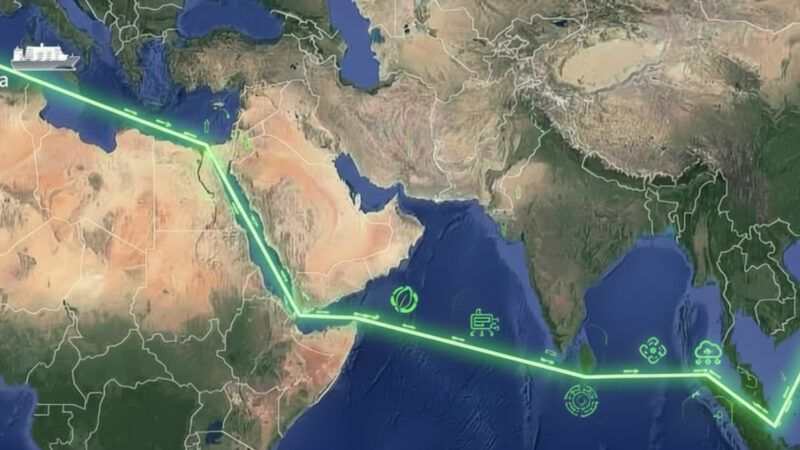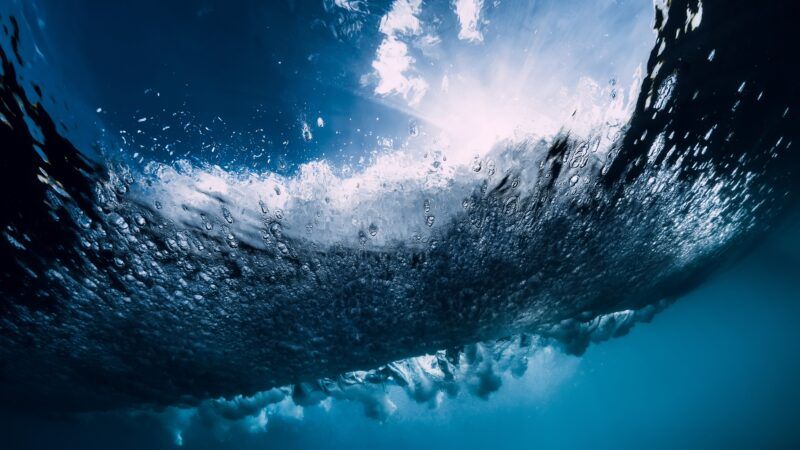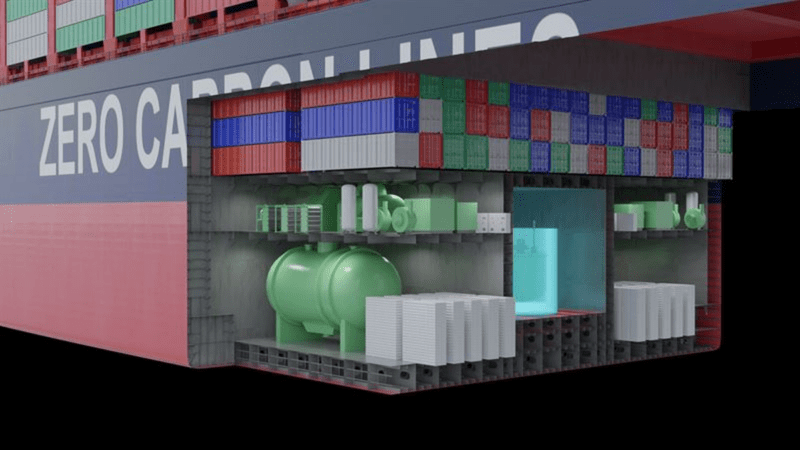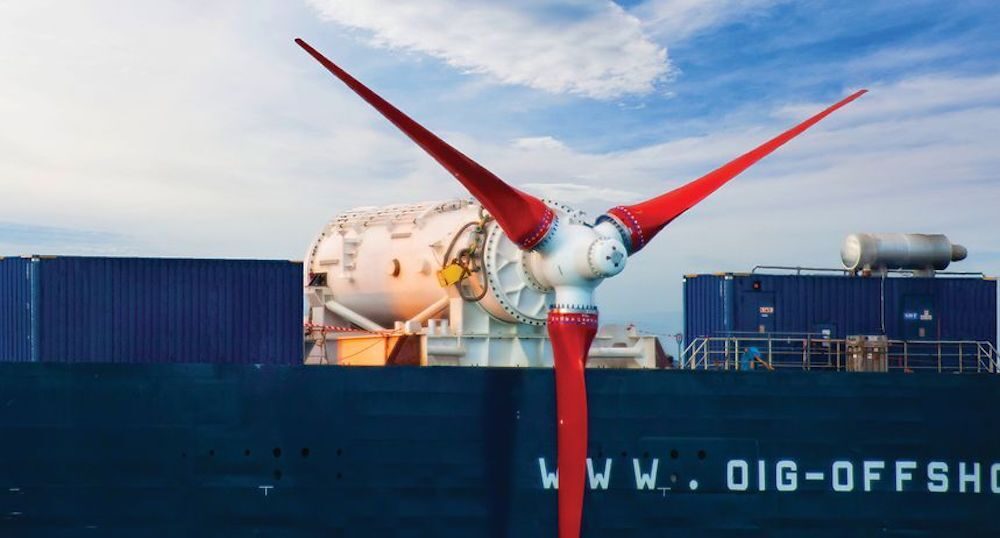 Tidal power is a promising form of renewable energy because - unlike the sun or wind - it’s predictable. (Photo by ANDRITZ)
Tidal power is a promising form of renewable energy because - unlike the sun or wind - it’s predictable. (Photo by ANDRITZ)
Is seawater power the next leading renewable energy source for ports?
Wind and solar energy have long been considered valid sources of renewable energy with new projects cropping up every year. But ports – the gateways to the sea– are exploring the possibilities of collecting power from water as a means of renewable energy.
 Tidal power is a promising form of renewable energy because - unlike the sun or wind - it’s predictable. (Photo by ANDRITZ)
Tidal power is a promising form of renewable energy because - unlike the sun or wind - it’s predictable. (Photo by ANDRITZ)
When a building houses solar panels, one is able to quickly identify the sharp edges and flat reflective surfaces of these devices used to collect renewable energy from the sun. The same goes for the recognizable structures of wind turbines that often paint the horizons of open fields and offshore waterways across the world.
These energies capturing inventions are well-known to the public eye and have become popularly used by cities, countries, and - of course - ports. In fact, the production of energy through renewable sources is becoming increasingly more relevant for ports every year.
New wind and solar projects are announced regularly, for example, the world’s largest offshore wind farm that is currently under development. It will be completed in 2020 off the East Coast of Britain and will produce enough energy to power 1 million homes.
But ports have the unique opportunity to collect energy from a different source that has always been abundant to them: water from the sea. In an age where renewable energy is a priority, ports are exploring all of their options for accruing water power.
Due to the distinct movement and composition of water, there are a number of ways in which ports can collect energy in this form. Each of these avenues is being explored to the fullest to ensure that water energy is leveraged at maximum capacity.
Wave energy
The use of waves to create renewable energy is possibly the most diverse in infrastructure and new technology. Below are some examples of how new solutions capture energy from the movement of waves.
Some of these devices could also be used to mitigate the effect of extreme weather conditions that are affecting dock and port infrastructures more and often due to climate change.
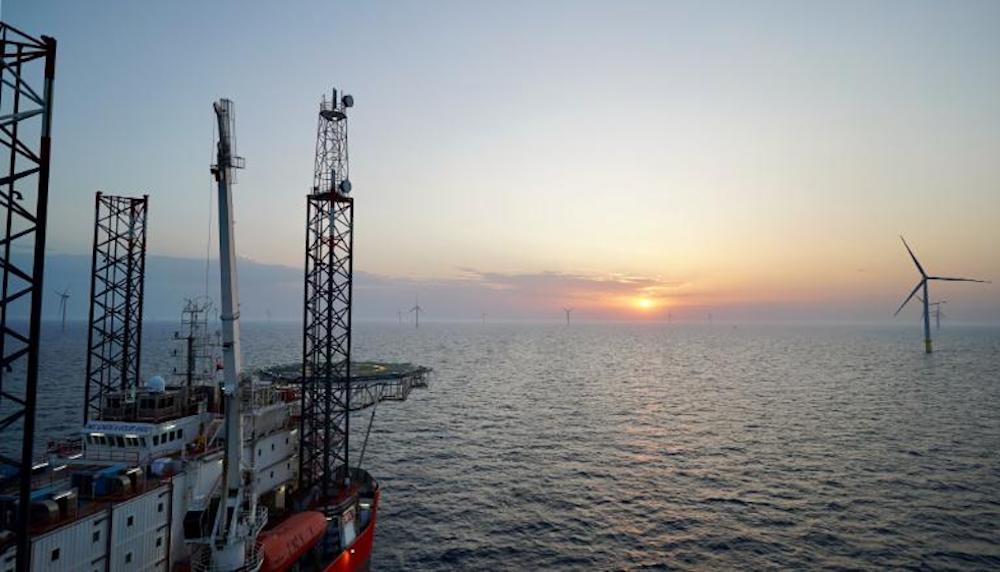
Eco Wave Power - Hydraulic floaters
As incoming waves charge for shore, floater technology by Eco Wave Power -on a basic level- converts the rising and falling motion of waves that are at least 0.5 meters high into clean energy.
For a more complex look at what happens in the floaters: hydraulic pistons are compressed and decompressed to transmit biodegradable hydraulic fluid into land located accumulators that store compressed the fluid. The release of this pressured fluid rotates a hydraulic motor, thus rotating the clean energy generator. Finally, the electricity is transferred into the grid via an inverter.
Wello Oy - Penguin device
Wello Oy’s technology consists of a ‘penguin device’, which is housed inside a floating vessel that protects the equipment from ever coming in contact with water. Rotational movement of the Penguin device is derived from wave motion (which can withstand waves as high as 18 meters) and is directly converted into electricity that goes straight into the grid.
This technology is considered efficient and easy to use, as it only needs connection to moorings and the electrical grid and can be monitored remotely.
Seabased - WECs
With Seabased’s buoy technology, wave energy converters (WECs) float above the surface inside buoys that follow the movement of the waves and generate electrical power from it. Then, an underwater switchgear converts this kinetic energy into electricity that is suitable for grid use.
The design philosophy of the Seabased solution is highly modular, meaning that build-ups or expansion can be done easily. All of this increases planning flexibility and reduces investment risk.
Oscilla Power - Triton
Triton is another kind of WECs with a highly efficient, two-body point absorber. Unlike most conventional WECs, Triton’s surface float is stimulated by ocean waves in multiple modes - heave, pitch, surge, and roll - enabling increased energy capture across a wide range of ocean conditions.
These solutions, and others on the market, help ports leverage the movement on the surface of the ocean - but the movement below requires different treatment.
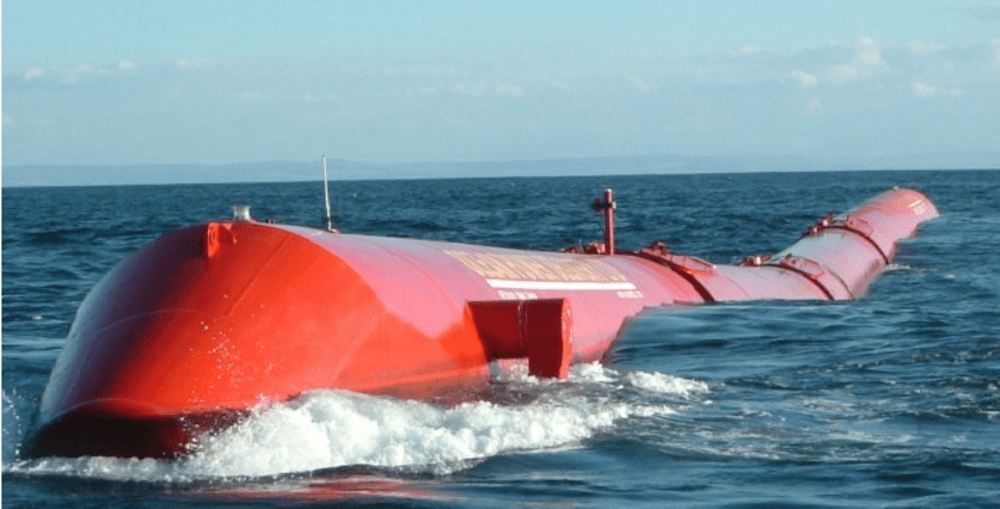
Tidal power
Tidal power is a promising form of renewable energy because - unlike the sun or wind - it’s predictable. Depending on an energy source of this nature is, at the very least, reliable in terms of timeline.
The main tool used to convert the movement of water coming from the change of tides into electricity is the tide turbine. It can be imagined as an underwater windmill, that is driven by the changes of heights between high and low tide.
What is the impact of this technology in the real world? For a better idea, a successful underwater turbine project in Scotland managed to successfully power nearly 4,000 homes in the past year, which is a significant milestone for tidal projects of this nature. In other words, 24.7 gigawatt hours (GWh) of predictable renewable power to the national grid.
While projects of this nature exist in Sihwa Lake in South Korea or Jiangxia’s Pilot Tidal Power Plant in China, none of these matches the recent achievements of the Scotland turbine project.
However, the tide turbine is expensive to build and so is not a widely developed method nowadays. But that’s not stopping new technology from cropping up.
Tidal Barrage Energy is controlled by a power plant that is made up of 3 parts: the barrage itself that holds water back during high tide, the sluice gate that lets the water through, and finally the turbine and the generator. Moreover, the sluice gates are often left open during high tides and closed during low tides, which propels the water differentiation and thus encourages more power.
Then there’s the invention of Tidal Stream Generators, which can be imagined as below-water wind turbines that converts kinetic energy into electricity.
And finally, Dynamic Tidal Power, which in theory exploits tidal flows. This is still being developed but will hopefully allow ports to better understand the relationships between tidal flows, potential, and kinetic energy.
All of this relies on the fact that the density of water is almost 1,000 times greater than air makes the potential of energy coming from this technology appealing. As time goes on, ports will likely see more from tidal energy and its ability to create useful power.
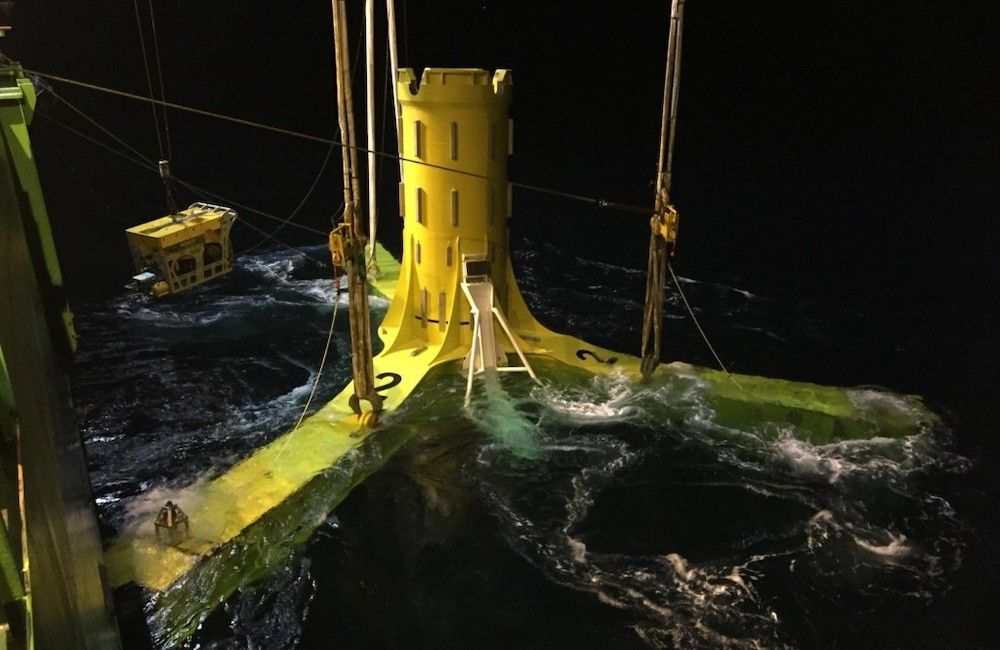
Energy from currents
Like tides, currents are also a form of hydropower that can be somewhat predictive, and this power can be collected in a similar manner.
As tidal currents are based on the movements of the tides, one would assume that these are formulaic currents. However, with the additional factors of the wind and thermohaline circulation, they become less foreseeable. But that’s not to say that ports are shying away from using these movements of water as a form of natural energy.
Here, underwater turbines again enter the discussion of how to turn this kinetic energy into electricity. This tidal current technology is designed to withstand strong flows of up to 5m/s and at depths of 100 meters below surface.
The turbines are kept in place by gravity, pins, or pilings depending on the tidal stream characteristics, according to ANDRITZ who creates this kind of technology for countries around the world including Austria, Brazil, China, and the US.
Their advanced variable speed-pitching systems and nacelle yawing optimize capturing of energy from the ebb and flow of currents, in addition to automatic control software governing a self-driven monitoring system.
Another colossal project of this nature is currently under development from CrowdEnergy, whose goal is to find a practical and responsible way to replace the use of fossil fuels and nuclear power with tidal current power.
These solutions, and others on the market, help ports leverage movement on the surface of the ocean - but this movement below requires different treatment. Individuals question if these devices are resistant to extreme weather conditions with powerful waves. For example, Gloria’s storm in Spain incurred enormous devastation on the coast and these devices, perhaps, would have been damaged by the extreme conditions.
For that reason, unique technology has been developed and researched to leverage energy below the surface.
Marine Geothermal exploration
Taking a step away from the movement of seawater and towards another kind of water power, experiments in marine geothermal exploration are enabling ports to collect the water that lies below the surface of the ground to be used as a source of energy. For example, to heat homes or for steam production.
This sort of technology makes use of the difference in temperature between warm surface water and cold surface water found on the seabed. For coastal towns, it has a huge potential, with 40% of populations that live less than 40 km from the coast making use of it.
This seawater is pumped through 1 km long pipes to coastal facilities, where heat exchangers and heat pumps are used to create heating and cooling mechanisms. A few obstacles such as temperatures of the water have challenged the development of this mode of collection, but scientists are focusing on combining marine thermal energy with other forms of renewable energy, like wind or solar, to make it more effective.
For a look at practical examples of this technology, one can turn to The Netherlands where the Port Authority of Rotterdam, in partnership with Shell Geothermal BV, has made advancements in their marine geothermal research.
As part of the Ultra-Deep Geothermal Energy (UDG) green deal, the subsurface of the western section of Rotterdam port has been mapped out thoroughly and is ready for the first steps of potentially harnessing geothermal energy to generate power.
The Port of Rotterdam and Shell Geothermal BV have also been issued an exploration permit from the Netherlands ministry of economic affairs, meaning the two will begin planning for the next steps of their mission.
“If geothermal heat can be brought to the surface as hot water, it can serve as a good renewable source of energy, particularly for the production of steam for industry. Moreover, once slightly cooled following use by industry, the water can be used to heat homes and greenhouses via a regional heat network.”
Port Authority of Rotterdam
That’s just one of the many examples of how these new forms of technology are being leveraged by ports today. But with the high costs that these technologies demand, the question still remains: will waterpower technology be at the top of the port priority list in the coming years?
The future of renewable energy for ports
Despite the density of water and its potential to create large amounts of energy through these methods, seawater still remains a secondary source of power for ports. This is due in part to cost, a huge factor in feasibility and construction.
Not to mention the factor of port conditions, which ensures that these models are not always fruitful. For example, despite putting sustainability at the forefront of port initiatives, the Port of Barcelona is limited by the conditions of the Mediterranean. As a calm sea with little tide, wave, or current movement, implementing these systems within it simply doesn’t provide enough energy in return to be worth the investment in these practices.
While these projects will continue to develop across the world, especially with more importance being put towards renewable energy, the principle sources of energy production will likely remain wind and solar.
Further research should be done to understand the impact of these new technologies in the marine ecosystems and ensure that it is also sustainable for the seas and the life within them.
At the very least, one could hope that water energy technology may one day be as familiar to the public eye as a solar panel or wind turbine.



